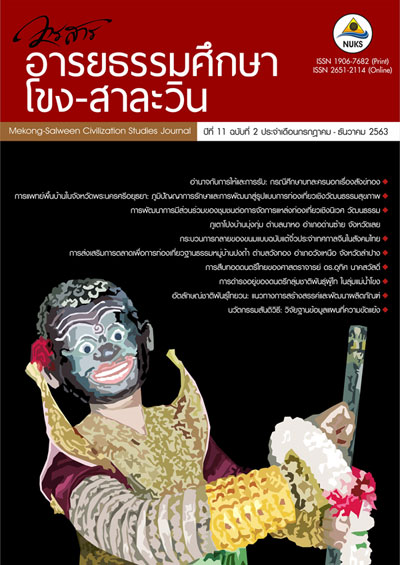Peaceful Means Innovation: Conflict Mapping Database Research
Main Article Content
Abstract
This study consisted of two objectives in conducting the database for conflict mapping: 1) to collect the data and survey the conflicts arising from the government projects and policies in two regions: the north and the south and 2) to analyze the conditions of the conflicts in these two regions. The process of qualitative research was mainly implemented. The data were collected by using document research and in-depth interviews. The results of the first objective revealed 80 cases of the conflicts in 16 provinces of the northern region or 5 cases in each province. The majority of the conflicts were caused from structural conflicts. In addition, there were 55 cases of the conflicts in 11 provinces of the southern region or 5 cases in each province. The majority of the conflicts were caused from structural conflicts similar to those in the northern region. The results of the second objective suggested that there were many unique methods based on the local contexts in solving the conflicts in each region. For example, in the southern region, most of the conflicts had been present for generations resulting in disparities in society, and the most plausible process of resolving the existing conflicts in the southern region was to conduct public hearings to promote the public participation and sharing of opinions. In the northern region, the public policies had been presented in the form of development projects and state mechanisms. The ignorance of the local people’s needs and the lack of the public participation in the area at the outset of each project had caused the conflicts. In fact, the conflicts in both regions had not been dissolved since the start. The database for conflict mapping from this study can be applied as a compass for policymakers to resolve the conflicts efficiently with the vision in a suitable direction.
Downloads
Article Details
References
Boonnum, C. & Chaomethakij, S. (2018). Conflict Mapping in Southern of Thailand Research (Phase 2). Bangkok:
King Prajadhipok’s Institute.
Chompunth, C. (2013). Good Governance and public participation in decision-making process of development
project. Journal of environmental management, 9(1), 85-106.
Miall, H., Ramsbotham, O., & Woodhouse, T. (1999). Contemporary conflict resolution: The prevention,
management and transformation of deadly conflicts. Cambridge, UK: Polity Press, United States.
Moore, C. W. (1986), The Mediation Process. Practical strategies for resolving conflict. San Francisco: Jossey Bass.
Photikanit, K. (2018 ). Conflict Mapping in Northern of Thailand Research (Phase 2). Bangkok: King Prajadhipok’s
Institute.
Slipmahabandit, M. (2012). Environmental Disputes in conflict resolution: fundamental knowledge in mediation.
Bangkok: Thana Press.


